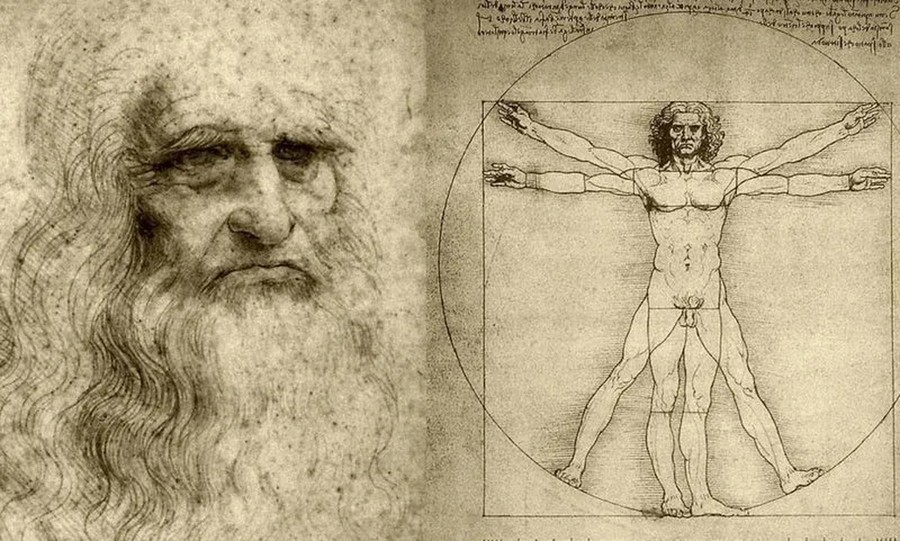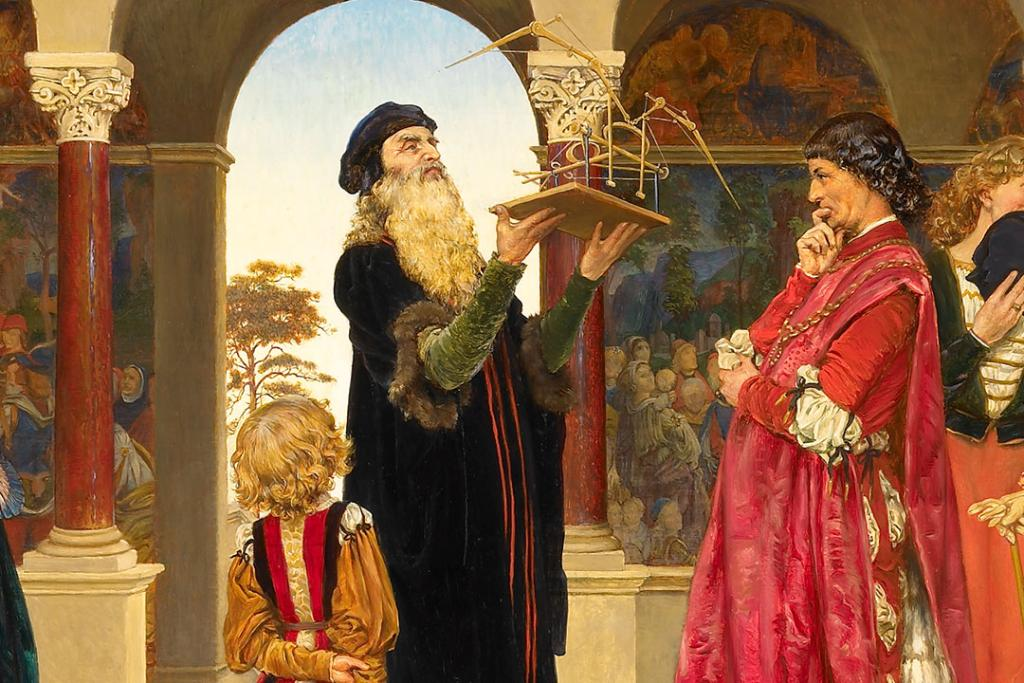Leonardo da Vinci stands as one of the most iconic figures of the Renaissance and one of the greatest artists and thinkers in history. Painter, sculptor, architect, engineer, scientist, anatomist, inventor, and philosopher—Leonardo embodied the ideal of the homo universalis, the “universal man.”
A Genius is Born
Leonardo was born on April 15, 1452, in the village of Vinci, near Florence, Italy. He was the illegitimate son of a prominent notary, Piero da Vinci, and a peasant woman named Caterina. From a young age, Leonardo displayed a remarkable talent for both painting and engineering.
At around age 14, he began an apprenticeship in the workshop of the renowned Florentine artist Andrea del Verrocchio, where he was introduced to painting, sculpture, and the fundamentals of mechanical design.
Master of the Brush
Leonardo’s painting is known for its exquisite detail, realism, and masterful use of perspective. He developed and refined techniques such as sfumato—the soft blending of light and shadow—and chiaroscuro, the dramatic contrast between light and dark.
Notable Works:
Mona Lisa (La Gioconda): Possibly the most famous portrait in art history. Her enigmatic smile continues to captivate and inspire countless interpretations. The painting is housed at the Louvre in Paris.
The Last Supper (Il Cenacolo): A mural in Santa Maria delle Grazie, Milan, depicting the moment Jesus reveals his impending betrayal. The composition, expression, and dynamism of the figures are masterpieces of Renaissance art.
The Virgin of the Rocks: Painted in two versions (housed in the Louvre and the National Gallery, London), it portrays the Virgin Mary with Jesus and John the Baptist in a rocky grotto.
More Than an Artist
Leonardo’s brilliance extended far beyond the canvas. His notebooks, totaling over 13,000 pages, reveal a scientific mind with a wide range of interests—anatomy, hydrodynamics, mechanics, botany, geology, aerodynamics, and physics.
Key Achievements and Ideas:
Anatomy: He conducted detailed dissections of human and animal bodies, producing astonishingly accurate drawings of muscles, organs, and skeletal structures.
Engineering: Leonardo sketched designs for flying machines, early helicopters, tanks, cranes, and even a rudimentary bicycle.
Hydrodynamics: He studied the movement of water and proposed ideas for irrigation systems and defensive infrastructure.
Although most of his inventions were never built in his lifetime, many of his ideas anticipated technologies by centuries.
A Philosophy of Wonder
Leonardo championed observation and empirical study. He believed that art and science were two expressions of the same truth, seeking to understand the world through reason, nature, and beauty. His famous quote, “La pittura è una cosa mentale” (“Painting is a mental thing”), captures his belief in the intellectual power of art.
Final Years and Legacy
Leonardo spent his final years in France, at the court of King Francis I, who held him in great esteem. He died on May 2, 1519, in the town of Amboise, leaving behind a vast legacy and an enduring aura of mystery that continues to inspire artists, scientists, and inventors.
An Enduring Inspiration
Leonardo da Vinci remains the ultimate symbol of Renaissance spirit. His multifaceted genius shows how curiosity, creativity, and perseverance can transcend the limits of time. Even today, his work is studied, admired, and celebrated—reminding us of the boundless potential of the human mind.









